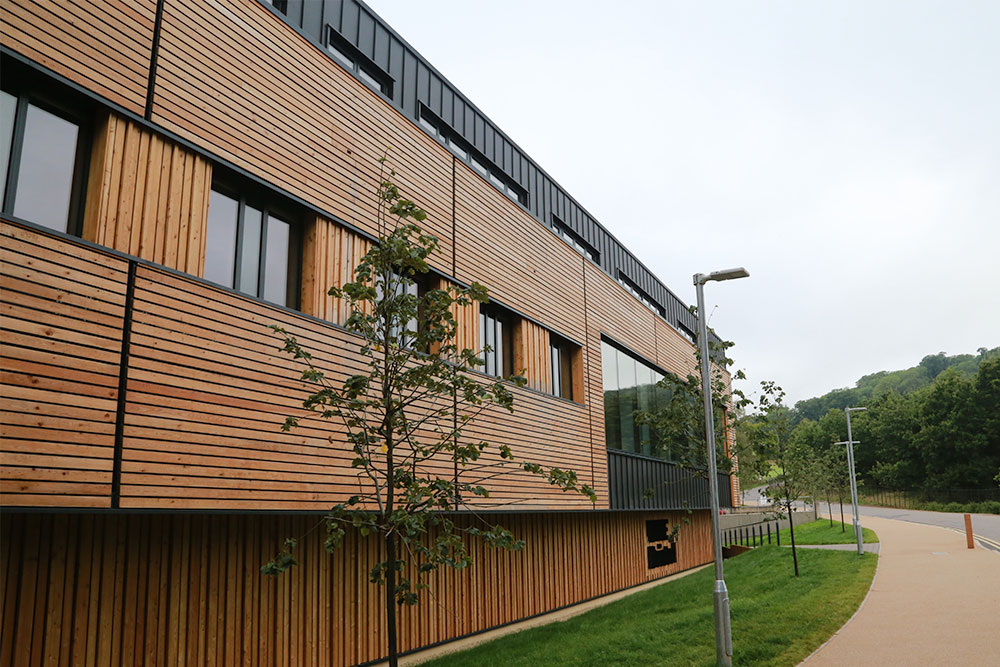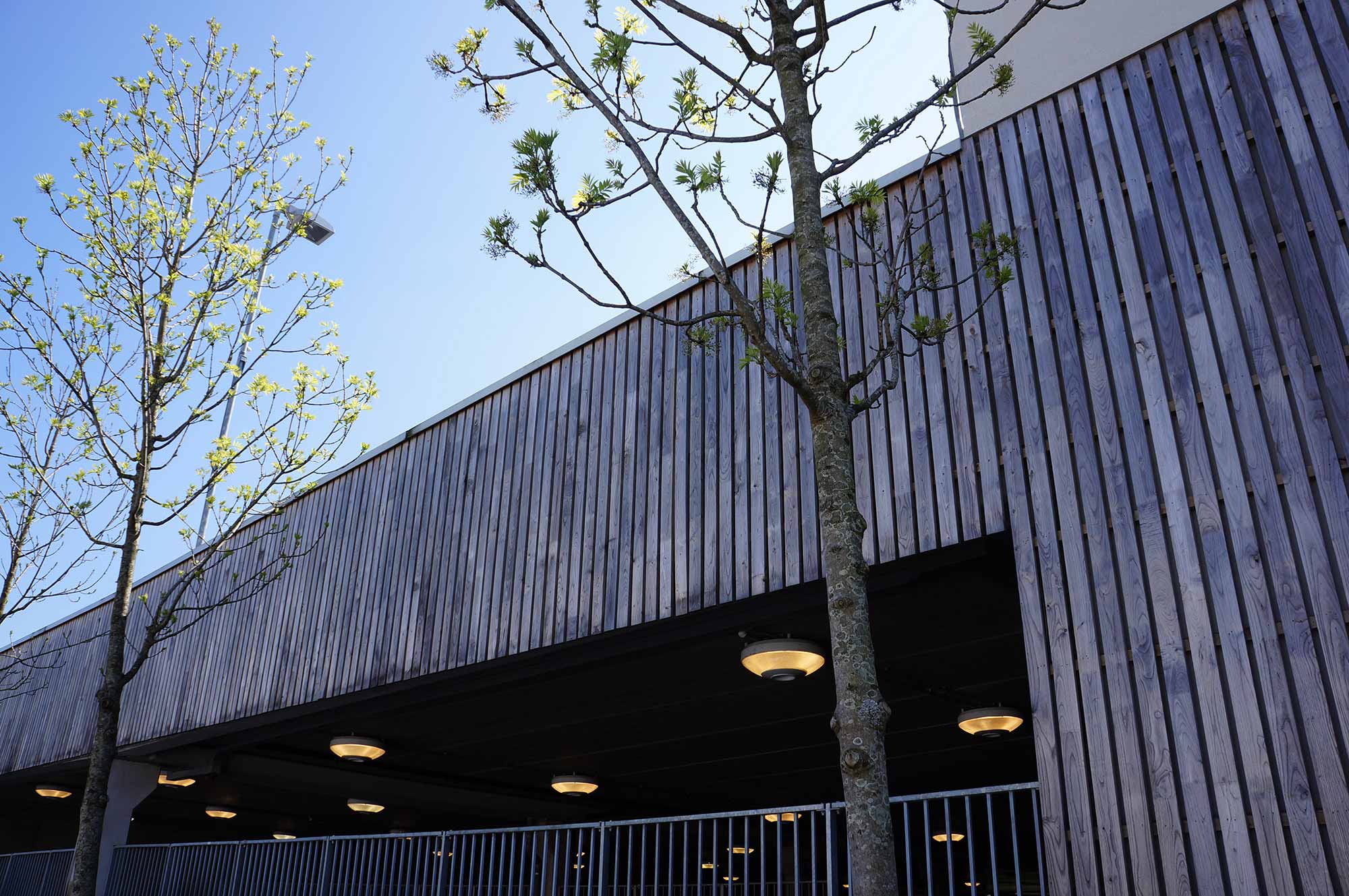Best Timber Cladding Species
Timber cladding has become the go-to material for a whole host of building projects in recent years.
Not only is it an economic and sustainable material, but it is also incredibly effective at enhancing the appearance of all types of buildings, including houses, residential homes, retail stores and schools.
If timber cladding is something you’re thinking about using in your next project, then it’s absolutely essential that you utilise an appropriate specie. Different species of timber have different characteristics and therefore behave slightly differently, so it’s vital you use the one most suited to the nature of your project.
In this guide we’ve explained the characteristics and features of some of our most popular species to give you a quick insight into the different options and possibilities. However, if you’d like to find out more or are after bespoke advice and recommendations in regard to your specific project, please don’t hesitate to get in touch with our team of cladding experts today.

European Redwood
Also known as Scots Pine, European Redwood is one of the most popular timber species. Imported from Scandinavia and Russia, it’s renowned for its quality and aesthetically pleasing appearance – whereas the sapwood is normally of a creamy-white to yellow colour, the heartwood tends to be either a yellowish-brown or reddish-brown shade.
It’s a strong and moderately hard specie, especially when you consider its weight (European Redwood has an average density of 520kg/m3). Although it’s not as durable as Canadian Western Red Cedar, it can be planed to a smooth, clean finish in a wide range of thicknesses, widths and profiles.
European Redwood is undoubtedly one of our favourite timber cladding species here at NORclad. In the past we have supplied it to academies, marketing agencies and charitable organisations to name just a few examples.

Siberian Larch
Siberian Larch is another of our favourite species for timber cladding due to its stunning appearance. It’s well known for its beautiful colouring and texture, with the shapes and patterns of the growth rings providing unique character to each cladding panel. It typically starts as a pale yellow or golden brown colour but will weather to a silvery grey colour over time.
It’s one of the hardest commercial softwoods, and as it isn’t as vulnerable to knocks, scrapes and scratches as other species such as Western Red Cedar, it’s ideal for external cladding.
Universities, housing developments and academies are just a few of the types of buildings we’ve supplied Siberian Larch to.

British Larch
British Larch has similar properties to its Siberian counterpart. British Larch, though, is typically warmer in appearance, boasting a colour that ranges from a light-dark brown heartwood to a white sapwood. However, it will too colour down to a silvery grey over time if it isn’t effectively protected.
One of our favourite aspects of British Larch is that, as its name suggests, it’s grown in various parts of Britain which gives it an improved carbon footprint in local projects over Siberian Larch.
British Larch has been the chosen specie for car parks, academies and a variety of other projects we’ve been involved in, where the higher knot content of this timber species was preferred.

Canadian Western Red Cedar
Canadian Western Red Cedar is a timber regarded highly for its durability, colouring, appearance and resistance to decay. It possesses warm red and brown tones as well as attractive grain patterns to offer a unique and distinctive look rich in personality.
As it’s very lightweight and easy to work with, Canadian Western Red Cedar is the perfect specie for timber cladding projects because architects and builders are able to modify it with ease. It also offers superior thermal properties over other timber species and other materials (such as concrete and brick), meaning that it functions well in both hot and cold climates.
It’s a versatile timber so it can be utilised on all sorts of projects and buildings, including universities, retail parks and schools.

British Sweet Chestnut
British Sweet Chestnut is naturally suited to timber cladding projects as it is a stable, straight grained and hard-wearing wood specie. Like Larch, it isn’t too vulnerable to knocks and scrapes.
In terms of its appearance, it is of a lovely golden colour and possesses a strong, pronounced grain with occasional dark mineral streaks.
Pre-drilling is usually needed to help prevent the wood from splitting or cracking and it’s vital that it is also either Air Dried or Kiln Dried when being utilised as cladding.
Retail stores are one area we’ve worked with that have benefitted from using British Sweet Chestnut.

Oak
Oak is a durable specie considered highly for its toughness, steadfastness and strength. Due to its dense structure (its average density is 670kg/m3) it is able to withstand fungal attack well and has a particularly good longevity, making it a favourable solution for cladding and many other exterior projects.
It also has a beautiful appearance, usually possessing a golden or yellowish-brown colour with a prominent grain.

Timber Cladding with NORclad
Hopefully this guide has provided you with some useful information regarding the different timber cladding species. However, if you’d like to find out more, please feel free to contact one of our timber cladding specialists – we’ll be more than happy to guide you through our range of timbers to ensure you find the perfect timber for your project.
Or if you’ve decided which specie you’d like to use, request a free, no obligation quote today!
If you’re stuck for inspiration, feel free to browse through our case studies >
See more: House Cladding – Everything You Need to Know About Timber Cladding
See more: Interior & Exterior Wall Cladding Ideas


















